I Tested 5 AI Coding Platforms With One Universal Prompt — Here's What Actually Works (And When)
A practical guide to matching the right tool to your building style
Welcome to NEW ECONOMIES, where we decode the technology trends reshaping industries and creating new markets. Whether you’re a founder building the future, an operator scaling innovation, or an investor spotting opportunities, we deliver the insights that matter before they become obvious. Subscribe to stay ahead of what’s next alongside 75,000+ others.
P.S. When you become an annual paid subscriber, you automatically access these best-in-class AI tools for free — for 12 months.
This week’s guest post
This week, we are welcoming Jenny Ouyang from Buidt to Launch which focuses on insights and hacks for builders who want to turn their expertise into real products, without drowning in complexity or building alone. If you haven’t yet subscribed, now is the time!
Do you ever feel like you’re drowning in AI coding platform choices?
Lovable, Bolt, Replit, v0, Base44… every week there’s a new revolutionary platform promising to transform how we build.
I used to think the solution was finding the “best” platform. Test them all, pick a winner, stick with it. But after building the same personal portfolio website across all five major platforms, I realized I was asking the wrong question entirely.
The real insight isn’t which platform wins, it’s understanding that different builders need different tools at different stages.
So I gave each platform the same challenge: build a personal portfolio site with database integration, AI features, and external payment processing. I crafted identical prompts in about 15 minutes, just to eliminate bias and see how each one interprets the same requirements.
What started as a side-by-side comparison turned into a masterclass in knowing when each tool shines, where they break down, and most importantly, which one actually fits YOUR building style and project needs.
Table of Contents
Phase 1: Fast Prototypes — Can They Build a Site in 10 Minutes?
Phase 2: Automation & APIs — Can They Handle External Data?
Phase 3: AI Integration — Do They Support Real AI Features?
Phase 4: Payments — Are They Business-Ready?
Final Verdict: My Choice + Full Time Breakdown
Platform Personalities Cheat Sheet
Prompt & Template Toolkit for Builders
Use the exact prompts and docs I created to go from prototype to production.
Phase 1: Fast Prototypes — Can They Build a Site in 10 Minutes?
What I Asked For
A personal portfolio landing page that pulls content from my newsletter, looks professional, and showcases my work. Nothing too complex, just something that could go live today.
The Result: All Platforms Can Prototype
Surprisingly, all five platforms delivered. Every one of them generated a landing page I’d be proud to share — in just 5–10 minutes using a single prompt.
No-code has officially solved prototype-level work.
But even in this “easy” phase, platform personalities started emerging.
Who Went Above the Prompt?
Lovable and Replit went above and beyond.
When I provided my newsletter URL, both visited my site, scraped real recommendations from my Why Subscribe page, and auto-populated the landing page with authentic content. I’m still amazed by this level of initiative.

v0 and Replit also demonstrated impressive content intelligence.
They didn’t settle for placeholder text — both explored my Start Here and Premium Resources pages and pulled in actual featured posts and work samples.
This wasn’t just template generation, it was thoughtful content curation!
Who Had Hidden Flaws
But here’s where things get real: dark mode broke everything.
Then I flipped on dark mode — and everything broke.
As a developer, testing light and dark themes is natural. But Base44 and v0 failed hard: no background color adjustments, invisible text, broken layouts. For platforms positioning themselves as pro-grade, this was a red flag.
Phase 1 Decision Point
Stop here if: You just need a portfolio site, landing page, or demo for a meeting this week. All of these platforms can deliver that in minutes. Your choice comes down to aesthetic preference more than technical capability.
But what happens after you get that quick website built? That’s where the real decisions begin.
Continue if: You want dynamic content, user interactions, or anything that changes over time.
Phase 2: Automation & APIs — Can They Handle External Data?
What I Asked For
I automate repetitive work whenever I can. So for this portfolio, I wanted it to:
Pull new newsletter posts automatically
Store metadata in a hosted database
Update weekly (matching my publishing schedule) — no manual steps
A simple ask… but a major capability divider.
Who Were the Winners
Both Lovable and Replit handled this with ease.
Lovable integrated with Supabase in under 10 minutes — smooth and frictionless.
Replit, with its full-stack setup (Express.js + PostgreSQL), took around 20 minutes. I had to manually input the DB URL, but otherwise, it just worked.
Both proved they can handle serious, real-world data requirements.
Who Hit Walls
The moment I tried pulling external data (like RSS feeds), the cracks showed.
Base44 hit a CORS wall. It couldn’t fetch external feeds due to browser security rules. The platform itself admitted:
I cannot implement server-side tasks or manage backend functions within my current operational scope.
Bolt was chaos:
No environment variable support.
Claimed Supabase integration, but only for React SPAs, not the Next.js architecture it actually used.
Suggested
.env.localfiles, then API input via settings, then… greyed out Supabase entirely. Nothing worked.I spent 30+ minutes trying every method. Total dead end for external APIs.
v0 was inconsistent:
Sometimes recognized environment variables, sometimes didn’t.
At least it failed fast, like Base44, and didn’t waste time pretending it could handle external data.
To confirm, I exported the v0 and Bolt projects, ran them locally, and added proper credentials.
They both pulled data from Supabase just fine, which proves the issue wasn’t the generated code, but internal platform inconsistencies and broken environment management.
Phase 2 Decision Point
All serious platforms can generate functional code. But can they handle real dev workflows, like external APIs and secrets?
If your project pulls external data (RSS feeds, APIs, third-party tools), skip Base44, avoid Bolt, and brace yourself for v0’s inconsistency.
If you’re just using internal data or built-in analytics, Base44 might actually be ideal — clean and simple.
For anything beyond a self-contained app, Lovable and Replit are your realistic options.
Phase 3: AI Integration — Do They Support Real AI Features?
Adding AI chat meant handling external APIs, managing environment variables, and streaming responses. This is where platform polish meets real-world dev complexity.
Lovable: Your Product Strategiest
Lovable didn’t just implement the AI assistant — it became a product consultant.
It asked:
How do you want to handle daily API budgets to prevent cost overruns?
Should we store user questions for quality analysis?
What’s your preferred approach for authentication and conversation history?
These aren’t just dev prompts, they’re business design questions. Within two quick rounds of back-and-forth (under 5 minutes), Lovable generated a workflow diagram and implemented the assistant.
Insight: Lovable wasn’t just building, instead, it was co-designing. A product partner that happens to write code.
Replit: Your Senior Engineer at Work
Replit took a different route, and it shined when things broke.
When my API calls failed, it didn’t panic. It debugged like a pro:
Diagnosed the issue: “GPT-5 reasoning tokens exhausted”
Explained why: Token allocation misaligned with response size
Planned the fix: Switched to GPT-4o and adjusted parameters
Implemented it: Modified calls, tested thoroughly
Reported back: Full summary with manual verification steps
This wasn’t a patch. It was a masterclass in systematic problem-solving.
The Other Platforms That Stumbled
The earlier weak spots only got worse here.
Bolt: No environment variable support unless exported to StackBlitz, which defeats the purpose.
v0: Still inconsistent. Sometimes recognizes environment variables, sometimes not. No clear pattern why.
Both became unusable for any serious AI integration work. You can’t build real AI apps if you can’t even call an API.
Phase 3 Decision Point
This phase surfaced each platform’s true personality.
If you’re building AI features as part of a user-facing product, Lovable’s product thinking will accelerate your process.
If you’re building AI tools that need to actually work reliably, Replit’s engineering rigor is invaluable.
And if environment variables are giving you trouble, consider skipping Bolt and v0 entirely.
Phase 4: Payments — Are They Business-Ready?
Payment processing is the ultimate test of platform maturity. It demands:
Environment variable support
Webhook handling
External API coordination
Basic security hygiene
This is where you find out which platforms are really ready for production.
Replit: The Senior Engineer Delivers
Replit handled Stripe like a pro:
Asked for
STRIPE_SECRET_KEYandVITE_STRIPE_PUBLIC_KEYBuilt the full flow: buttons, success state, error handling
Just worked — click → pay → done
No complications. No weird workarounds. No architectural gymnastics.
Lovable: The Overcomplicated Path
Lovable, on the other hand, spiraled.
Required webhook secrets — but that needed domain setup I didn’t have (yet)
Suggested edge functions, session management, custom success pages
Finally landed on payment links (which should’ve been the first step)
After 30 minutes of back-and-forth, we got it working — but it revealed Lovable’s tendency to overthink integrations that fall outside its product-led comfort zone.
Phase 4 Decision Point
If you’re integrating with external services — Stripe, Calendars, CRMs — ask yourself:
Do I want a platform that solves integrations efficiently,
or one that treats them like product experiences to refine?
Even more important: Are you ready for production complexity?
Moving from prototype to production isn’t just about features, it’s about security, stability, and how you manage your own development process.
Final Verdict: My Choice + Full Time Breakdown
I’ve built personal sites before, but this experiment gave me the perfect excuse to fix the lingering gaps: things like database automation and payment setup that I hadn’t nailed down before.
In the end, I went with Replit. Not because of the UI (Lovable still wins there, in my opinion), but because Replit handled the technical side with the least friction. Once the foundations were in place, I used AI to polish the design until it matched exactly what I had in mind.
👉 You can check out the finished version of my portfolio site here.
How Long Did It All Take?
Ironically, building the actual site was the fastest part.
The real time sink was in debugging platforms, comparing results, and figuring out how far each one could really go.
Here’s a snapshot of how long each platform took me through the four phases:
Total time across the project? Around 20 hours — but most of it was spent learning where platforms break, not just building. And in the end, that’s what helped me choose the right foundation.
Platform Personalities Cheat Sheet
Quick Summary: What Each Platform is Really Built For
After building the same project across all five platforms, distinct personalities emerged.
Lovable → The UX-obsessed product manager: polished prototypes, thoughtful product questions, but tends to overcomplicate unfamiliar logic.
Replit → The senior engineer: systematic debugging, full-stack power, but expects you to keep up with its technical depth.
Base44 → The easy-going startup: analytics-focused, zero-friction deployment, but struggles with external integrations.
Bolt → The rapid prototyper: fast, familiar, great for demos, but tricky to connect with APIs.
v0 → The Vercel-optimized professional: production-ready architecture if you’re in the ecosystem, but no backend support at all.
Of course, all of them offer much more than I covered here — from GitHub integration to UI customization, chat/build modes, responsive views, and beyond. These modern platforms have come a long way, and the basics are no longer the bottleneck.
Fit Over Features: How to Choose Based on Your Build Style
The overwhelm isn’t about “too many platforms.” Each tool reflects a philosophy:
UX first. Engineering first. Analytics first. Speed first. Production first.
So the real question isn’t which is best, it’s which one fits the way you build?
Here’s a simple way to decide:
Identify your building style — product-minded, engineering-minded, marketing-minded?
Pick the platform that aligns with that mindset.
Go deep. Don’t switch tools just because you hit a limitation — understand its strengths.
Use other platforms to complement, not replace, your core stack.
You don’t need the perfect platform.
You need the one that amplifies your natural way of building.
Prompt & Template Toolkit for Builders
After weeks of testing failures, debugging nightmares, and platform chaos, I distilled the lessons into a practical set of templates that actually work. Feel free to use them, my only ask is that you give credit if you share or discuss them elsewhere.
The one-shot success system: 4-Phase Website Building Prompts 🚀
Your anti-chaos insurance policy: Master Constraint Prompts ⚡
Professional polish without the guesswork: Design Audit Template 🎨 (yes, I used this to upgrade the Replic UI starting Phase 3)
Your roadmap from prototype to production: Project Requirements Document 📋
Your Turn
What’s your go-to stack right now, and why?
Have you hit the same walls, or found totally different strengths?
Leave a comment or hit reply, I’d love to hear how you’re navigating these tools. We’re all building the playbook together.






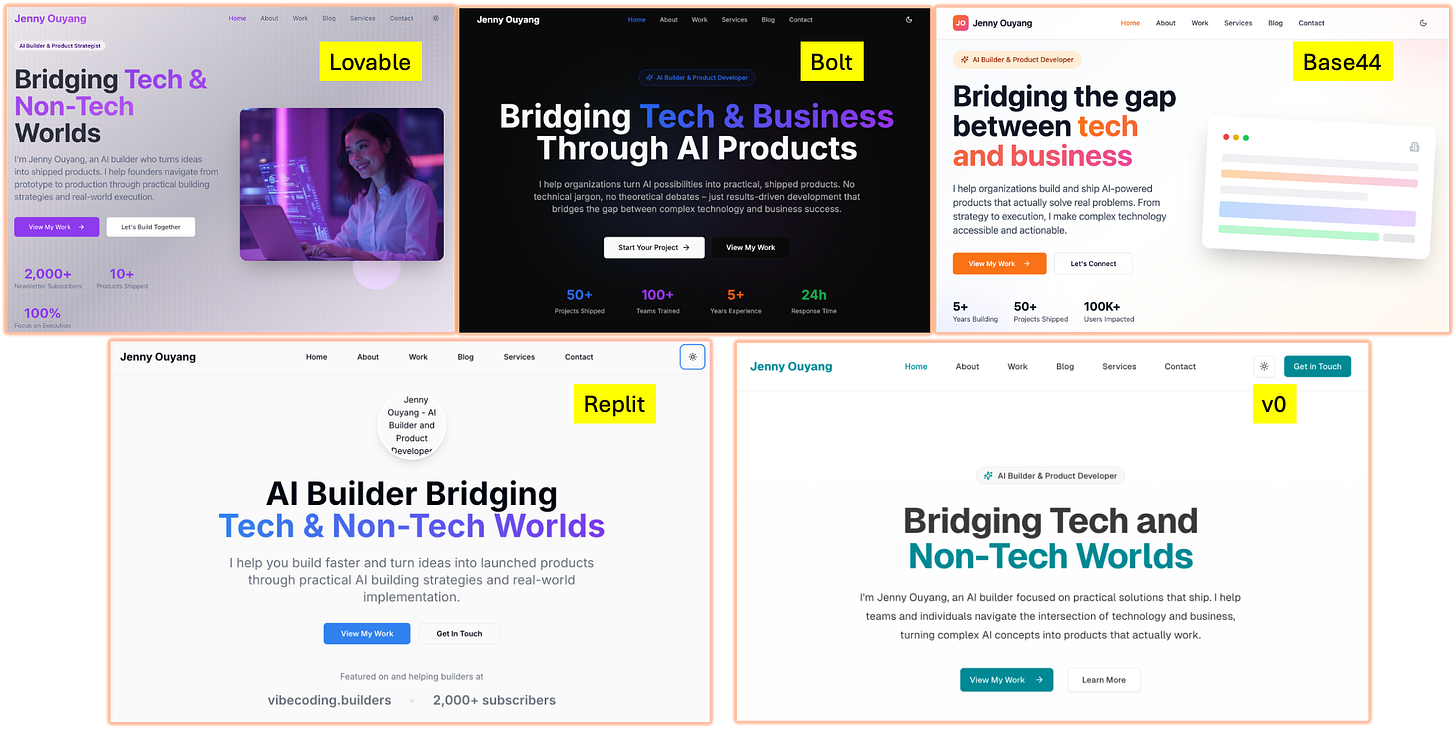



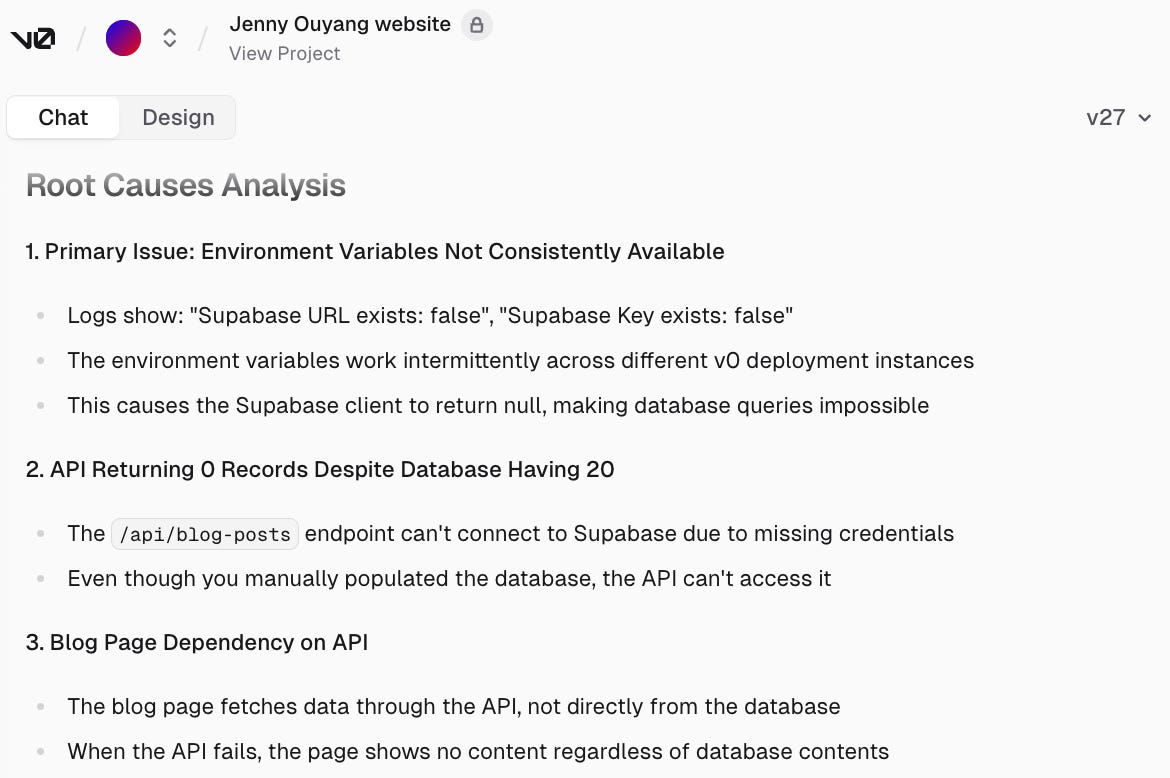
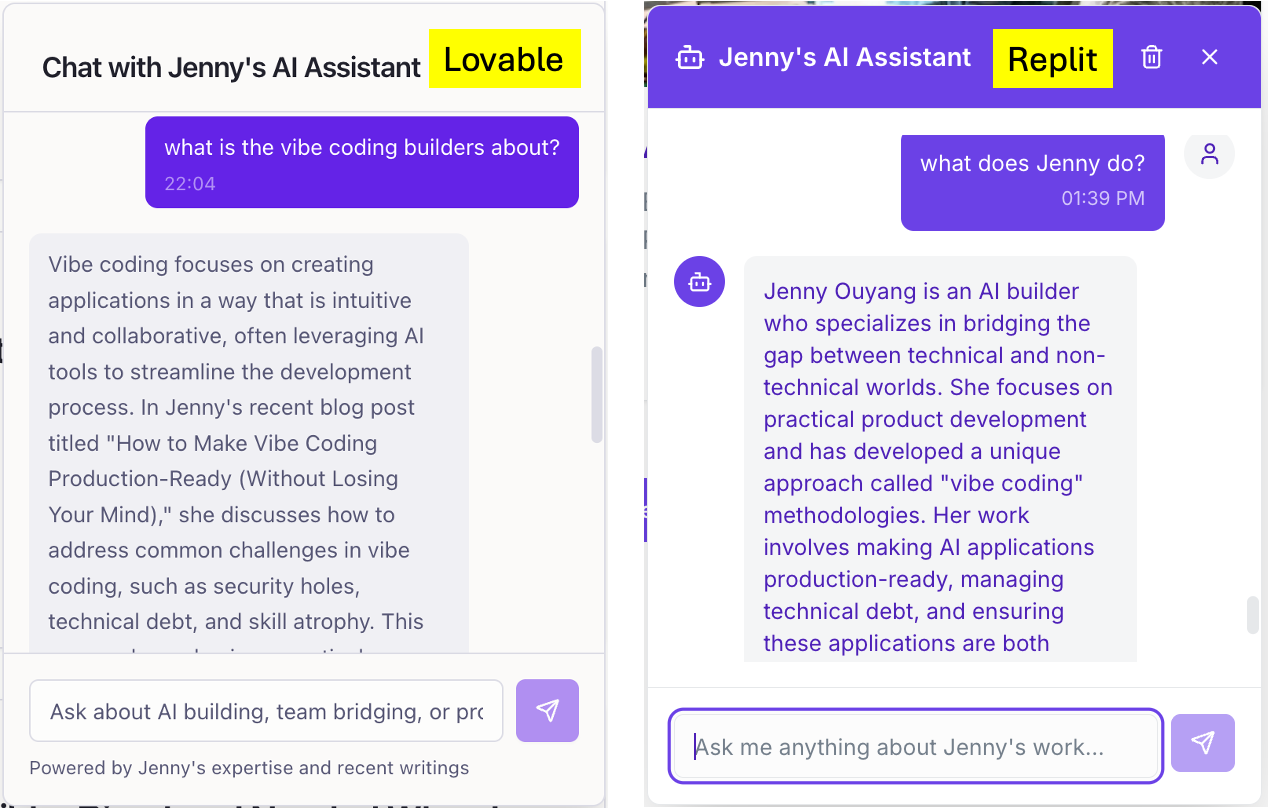
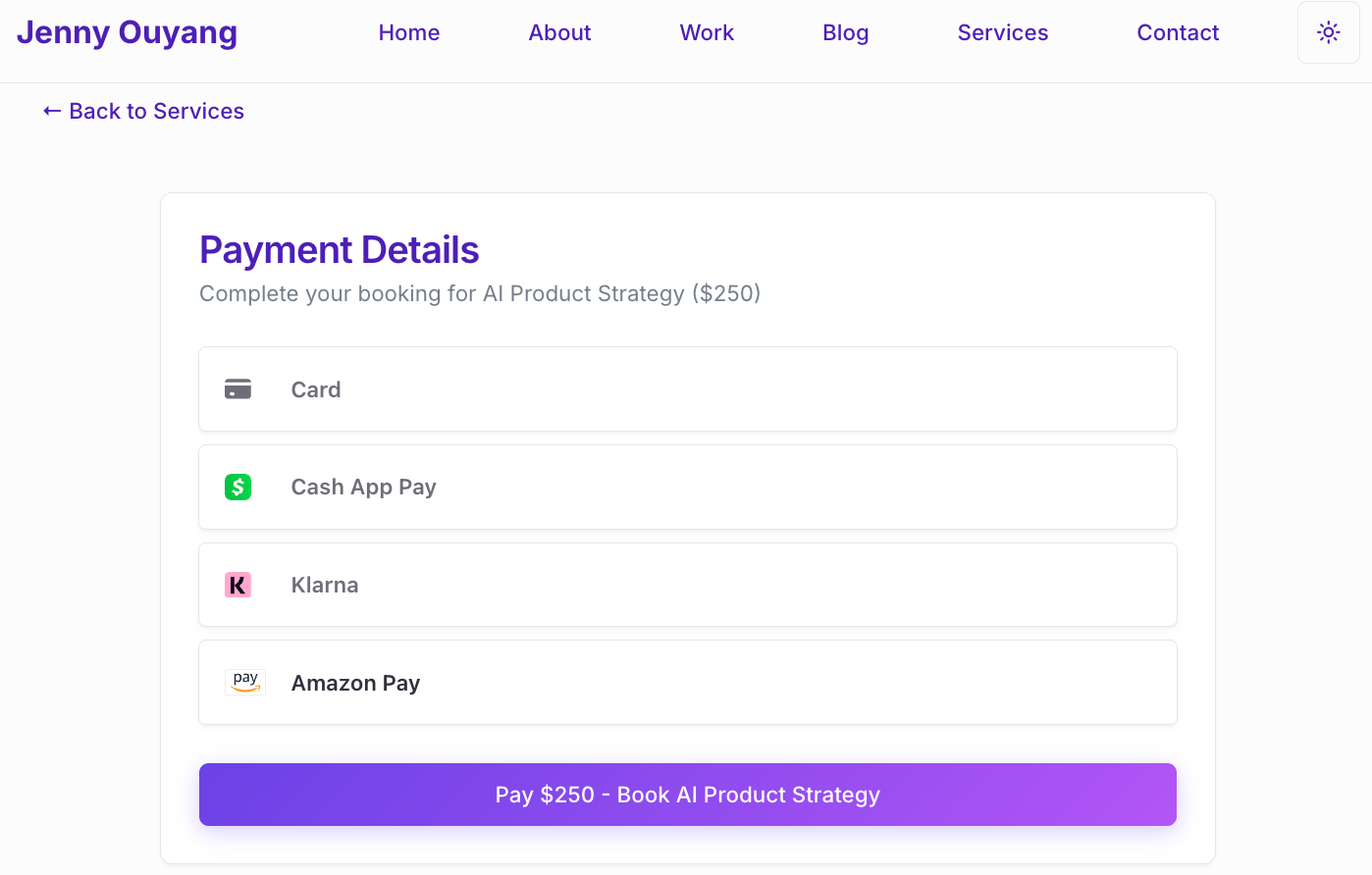


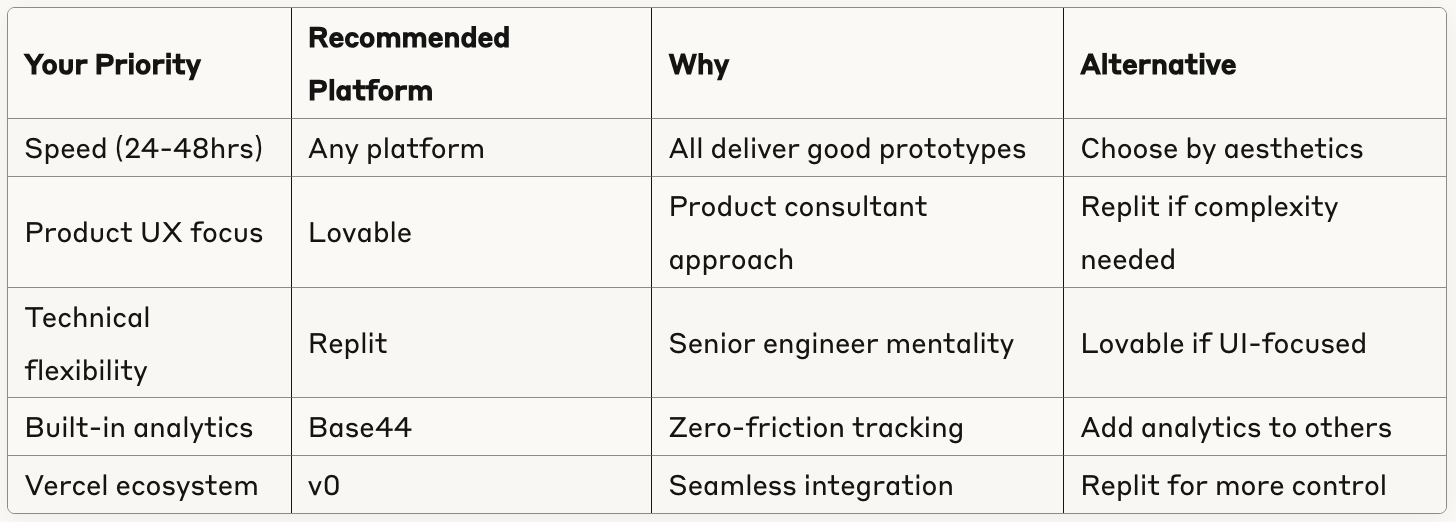

An amazing resource here @Ollie Forsyth
Thanks for this.
Such a great read Jenny! Replit has recently released Agent 3, have you tried it? I'm honestly impressed by how much better it's gotten.